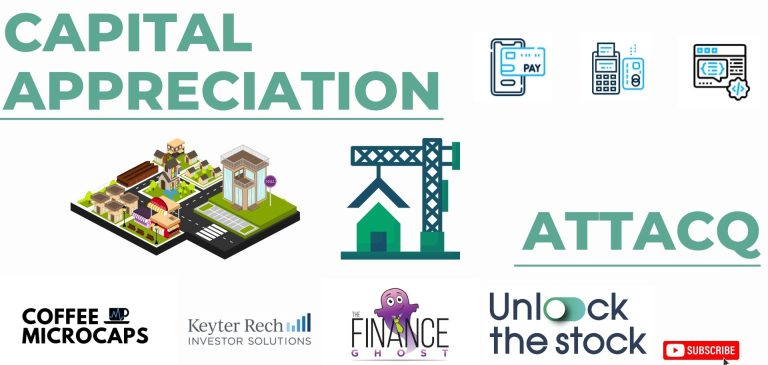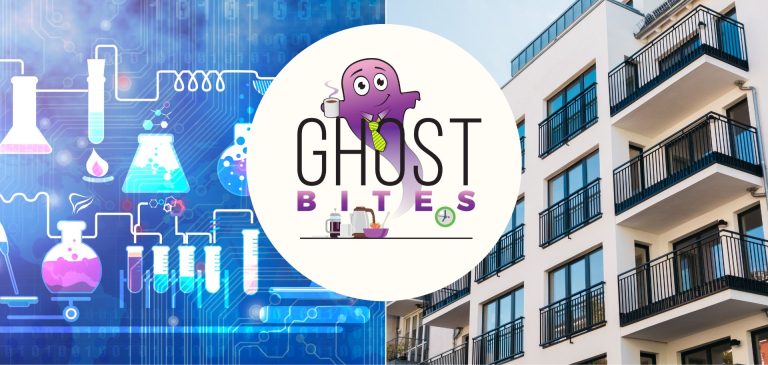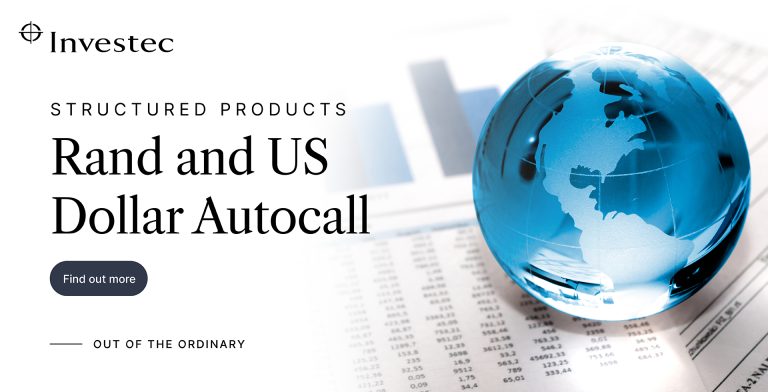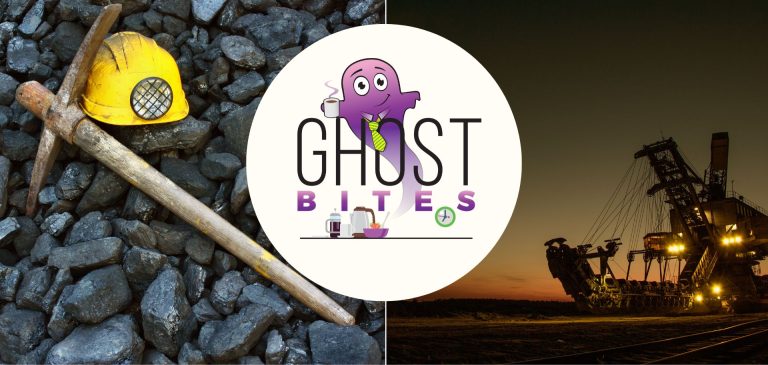Get the latest recap of JSE news in the Ghost Wrap podcast, brought to you by Mazars:
Note: due to my illness earlier this week, this edition of Ghost Bites covers SENS announcements on Monday 22nd and Tuesday 23rd July.
Also, congratulations to Forvis Mazars, Ghost Wrap brand partner, for being appointed as the auditors of eMedia Holdings!
Anglo American sells two royalty assets (JSE: AGL)
This raises $150 million in up-front cash
In mining, one of the ways to raise funding is to sell a stream of royalties related to an underlying commodity. Anglo American has done exactly that, selling two royalties to Taurus Funds Management for $150 million up-front and $45 million in deferred payments.
The royalties in question are an iron ore royalty owned by De Beers related to the Onslow Iron project in Australia. This raises cash for De Beers without having to do a deal related to diamonds. The other royalty is a gold and copper royalty related to a project in Chile.
The deal is expected to close in the fourth quarter.
The PGM price ruined the party for Anglo American Platinum (JSE: AMS)
An increase in production can’t save a miner when prices drop this much
For the first six months of the financial year, Anglo American Platinum achieved refined production up 5% and sales volumes up 9% as they dug into the inventory. Sadly, with the PGM basket price down 24%, there wasn’t much the company could do to prevent a drop in profits.
The fact that EBITDA only fell by 8% despite a 19% decrease in revenue is pretty impressive, although things deteriorated further down the income statement with HEPS down 18%. The dividend per share fell by 19% to R9.75.
If there is finally some relief for PGM prices, Anglo American Platinum has done a lot of hard work to prepare itself to capture the upswing.
Cashbuild seems to have turned a corner in South Africa (JSE: CSB)
Hopefully, the direction of travel from here is up
Cashbuild has released its full year sales numbers, which include a breakdown by quarter as well. As this is a 53-week period, it’s important to look at the 52-week vs. 52-week numbers for proper comparability.
On that basis, group existing store volumes were up 2%. Total revenue from existing stores increased 3%, so this suggests that roughly 1% came from pricing increases.
Cashbuild South Africa grew existing store revenue by 4% in the fourth quarter. That’s the number I would focus on, as this segment is 82% of group sales and the momentum through the year has been promising. Even P&L Hardware, 8% of group revenue and a segment that really struggled in the first half of the year, managed to post revenue growth of 3% for the fourth quarter from existing stores.
Is the bottom in? It could well be, especially if the positive sentiment around the GNU flows into actual consumer discretionary spending.
Kumba Iron Ore released interim results (JSE: KIO)
Both HEPS and the interim dividend have dropped sharply
Cyclical businesses are not good choices for those who have weak stomachs. Kumba Iron Ore isn’t just dealing with global iron ore demand and related prices, but also the ongoing pain of having to hold itself back due to constraints at Transnet.
For the six months to June, the group operated at an EBITDA margin of 44% and return on capital employed of 48%. Although this period wasn’t as strong as the comparable period, it’s still a very profitable business.
Speaking of profits, HEPS fell by 26% to R22.27 and the interim dividend dropped by 17% to R18.77.
Mpact’s earnings took a significant knock (JSE: MPT)
The paper business has had a tough time
Mpact has released a trading statement for the six months to June. The paper segment is where the troubles lie, with subdued demand and lower selling prices than in the prior year, leading to lower production volumes and an under-recovery of overheads. The plastics business increased revenue across all three divisions, but operating profit is expected to be in line with the prior year.
On a group basis, revenue fell 1% (plastics up 11% and paper down 3%) and EBITDA fell by 8%. Operating profit is down 20%. With an increase in net finance costs as well, HEPS is expected to be down by between 33.8% and 28.6% for total operations.
For continuing operations, which excludes Versapak, HEPS fell by between 37.8% and 32.5%.
Mr Price went sideways if you exclude acquisitions (JSE: MRP)
You have to be so careful in interpreting these numbers
When a company has been highly acquisitive, as has been the case at Mr Price, it’s so important to look at sales growth excluding acquisitions. This tells you how the core business is doing. In the quarter ended June 2024, Mr Price managed comparable store sales of just 0.1%.
Group retail sales, on the other hand, were up 4.6%. This is where the impact of acquisitions comes in. The group highlights that the two-year CAGR is 12.9%, so they want the market to remember that there was a strong base effect. They also point out that they gained market share for 11 consecutive months, with the comparable market down 0.2%. On that basis, they’ve technically gained market share even without the acquisitions.
Things seem to have improved significantly in June after a terribly lackluster April and May, with retail sales up 12.7% vs. market growth of 10.3%. Online sales increased 3.8% for the period and accelerated to double digit levels in June.
Cash sales were up 5.2%, while credit sales were up 0.3%.
The June acceleration is the highlight here, which is exactly why Mr Price pointed it out.
Sasol has released full-year production and sales metrics (JSE: SOL)
Overall, they “consistently met market guidance” for the year
Sasol has released its detailed production and sales report. If you want to get to grips with the overall group, I suggest you check it out here (find it under “quarterly business reporting”).
The high level summary is that they managed to meet market guidance, with improvement in key operational areas. That’s just as well, as product prices were down 15% for the full year. At least there was positive momentum in the second half, with the sales basket price up 9%.
In the Chemicals Africa business, it’s worth noting that Q4 prices were in line with Q3 prices. Perhaps the bottom is in for the basket related to that business. In Chemicals America, the basket price was up 2% in Q4 vs. Q3, giving another sliver of hope. It’s even better in Chemicals Eurasia, with prices up 6% in Q4 vs. Q3.
South32 should meet FY24 operating unit cost guidance (JSE: S32)
This quarterly report caps off the 2024 financial year
South32 released a quarterly report that brings to a close the 2024 financial year. As they finalise the numbers, it looks like they will meet operating unit cost guidance.
In copper, they achieved 98% of production guidance. Aluminium production was flat year-on-year, as were alumina and nickel. Zinc equivalent production increased by 10%. Illawarra Metallurgical Coal saw production fall 24% in line with guidance as part of the planned longwall moves. South African manganese achieved record production, while Australia Manganese had a much more difficult year thanks to Tropical Cyclone Megan.
The sale of Illawarra is expected to be completed later this quarter.
FY25 production guidance has been revised lower for alumina, Sierra Gorda payable copper equivalent and Cannington payable zinc equivalent.
They had a strong finish to the year from a working capital perspective, unlocking $180 million in working capital in the second half vs. absorbing $276 million in the first half.
In a separate announcement, South32 noted that the environmental conditions put forward by the Australian regulators for the Worsley Mine Development Project are so onerous that they impact the long-term viability of the project. South32 plans to lodge an appeal accordingly. Based on the uncertainty, an impairment of $554 million pre-tax has been raised.
There’s a potential deal in Spain for Vukile (JSE: VKE)
An offer is in play for Lar España
Vukile holds 28.7% of Lar España through Castellana, the group’s Spanish investment vehicle. A real estate investment consortium has put forward a cash offer for the shares of Lar España at EUR8.10 per share, reduced by any distributions paid by Lar España during the offer period.
Vukile has not had any discussions with the consortium regarding the potential transaction, so at this point there’s no indication of whether the terms will be appealing to Vukile.
Before the offer, Lar España was trading at just below EUR7.00 per share.
Separately, Global Credit Ratings (GCR) put Vukile’s rating on a positive outlook, which is encouraging for the cost of debt going forward.
Little Bites:
- Director dealings:
- The former CEO of The Foschini Group (JSE: TFG) sold shares in the company worth over R10 million as part of a “portfolio rebalancing” – I’m quite sure that the share price rally of over 42% in the past 90 days helped with the timing of that rebalancing.
- The CFO of Jubilee Metals (JSE: JBL) bought shares in the company worth R627k.
- A director of a major subsidiary of Insimbi (JSE: ISB) continues to sell shares, this time to the value of R36.5k.
- Hammerson (JSE: HMN) announced the disposal of its entire stake in Value Retail to Silver Bidco for an enterprise value of £1.5 billion. This generates cash proceeds of £600 million. This recycles 42% of Hammerson’s portfolio value into cash, having achieved a 10-year internal rate of return (IRR) on the asset of 13%. The disposal was at a 24% discount to the gross asset value though, which is another example of why listed property funds often trade at a discount. This takes the loan-to-value (LTV) ratio down to 23%. Following the disposal, Hammerson intends to return up to £140 million to shareholders through a share buyback, representing 10% of its market capitalisation. They also plan to increase the payout ratio to 80% – 85% of adjusted earnings vs. the dreary current level of 60% – 70%.
- Momentum Group (JSE: MTM) hosted an investor conference and made all the detailed presentations available to the public. If you want to really dig in, you’ll find it all here.
- Coronation’s (JSE: CML) assets under management came in at R632 billion as at the end of June. Irritatingly, the company never discloses comparatives, forcing us to go digging. AUM was R631 million as at the end of March, so they went sideways this quarter.
- Reinet (JSE: RNI) announced that the net asset value at June 2024 reflects 1.6% growth vs. March 2024. They received dividends of €34 million from British American Tobacco and €85 million from Pension Insurance Group. They funded commitments of €71 million for the quarter and didn’t make any significant new commitments.
- Lighthouse (JSE: LTE) has agreed to sell Planet Koper, a mall in Slovenia, for €68.75 million. €22.2 million of this amount will be used to settle debt related to the property. This is part of Lighthouse’s strategy to focus on Iberia, facilitated by the recycling of capital elsewhere.
- The Datatec (JSE: DTC) scrip distribution alternative delivered a pretty even result across the cash and share election. A cash dividend of R164 million was paid and shares worth R135 million were issued in lieu of cash.
- Mustek (JSE: MST) closed 16.9% higher on Tuesday on the news of Peresec increasing its stake in the company to 23.09%. Is there potentially a take-out attempt coming down the line?
- Texton (JSE: TEX) is investing further in the US, but at least this time directly into a property rather than a large fund. This is an industrial property being acquired on a net initial yield of 7.8%. The structure is a partnership with WS Industrial GP (known as Canvas), whereby Texton will commit 90% of the capital as limited partner and Canvas will contribute 10% as the general partner. This is a major commitment, with an initial contribution of $2.75 million and a subsequent capital commitment of $430k. The total commitment for Texton in rands is over R58 million.
- Orion Minerals (JSE: ORN) released a quarterly activities report. They’ve had a busy time, focusing on the development of the Prieska Copper Zinc Mine, with the goal of achieving an updated Bankable Feasibility Study by September 2024. Separately, the company reminded the market that the share purchase plan closed at 10am South African time on 23 July. We will now wait to see the results. For a reminder of how Utshalo is helping companies like Orion Minerals access the South African retail investor base, listen to this podcast.
- Kore Potash (JSE: KP2) has released the circular dealing with the approvals required to issue new share to David Hathorn as part of a broader capital raise. Hathon is the chairman of the company.

















